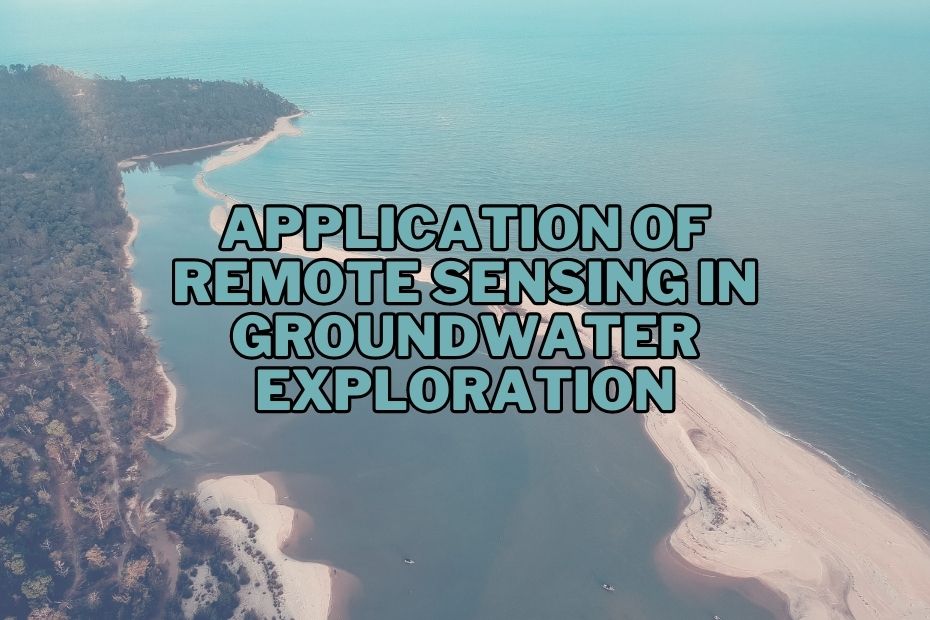Over the past decades, technology has significantly advanced our ability to locate and assess groundwater resources. One such technology, remote sensing, has emerged as an invaluable tool in the quest for groundwater. But how, you ask? Well, allow us to take you on a journey of discovery as we outline 12 remarkable application of remote sensing in groundwater exploration.
Remote sensing provides detailed and accurate images and data that help geologists identify potential groundwater sites, assess water quality, monitor changes, and manage water resources more effectively.
Application of Remote Sensing In Groundwater Exploration
The advent of remote sensing technology has significantly influenced groundwater exploration by providing a unique perspective for hydrogeologists to study the earth’s subsurface. Here are a few of its numerous applications.
1. Hydrogeological Mapping
Remote sensing is a powerful tool in hydrogeological mapping, aiding in the visualization and interpretation of geological formations associated with groundwater. Detailed images produced from satellite sensors enable geologists to identify subsurface structures that might host groundwater, like fractures and faults. Check how geologists utilize such tools.
2. Delineating Watershed Boundaries
In delineating watershed boundaries, remote sensing provides precise topographic data. These accurate watershed delineations help in managing and allocating water resources efficiently. The derived hydrological parameters from the remotely sensed data can guide watershed management strategies.
3. Identifying Aquifer Recharge Areas
Aquifer recharge areas are crucial for groundwater management. Through various techniques, remote sensing allows the identification of these areas by observing changes in vegetation, soil moisture, and surface temperature, all of which can suggest the presence of water underground.
4. Tracing Underground Water Flow
Tracing underground water flow is an arduous task. Remote sensing can provide solutions through the analysis of geophysical parameters like the earth’s magnetic field, gravity, and electrical conductivity. These measurements help infer the subsurface geology, thus hinting at the potential direction of water flow.
5. Quantifying Water Storage
Groundwater storage is a critical aspect of water resource management. Remote sensing techniques, such as satellite radar altimetry and gravity measurements, provide indirect estimates of changes in groundwater storage by mapping surface elevation changes and gravitational anomalies.
6. Detecting Water Quality
Remote sensing can indirectly measure water quality parameters, such as turbidity, temperature, and chlorophyll concentration, which are crucial for assessing the suitability of groundwater for various uses.
7. Monitoring Drought Conditions
Monitoring drought conditions is an essential application of remote sensing. It assesses vegetation stress and soil moisture levels, allowing for early detection of drought conditions and the formulation of mitigation strategies.
8. Assessing the Impacts of Climate Change
Climate change has significant effects on groundwater resources. By monitoring changes in precipitation patterns, land temperature, and vegetation stress, remote sensing can assess the impacts of climate change on groundwater.
9. Evaluating Land Subsidence
Land subsidence is a severe consequence of excessive groundwater extraction. Remote sensing techniques, such as Interferometric Synthetic Aperture Radar (InSAR), can measure subsidence with high accuracy, thus helping in its early detection and mitigation.
10. Predicting Groundwater Prospects
Remote sensing can help in predicting groundwater prospects by mapping suitable areas for groundwater extraction. This process involves the analysis of several factors, including surface and subsurface geological features, vegetation patterns, and rainfall distribution.
11. Analyzing Hydrological Cycles
Understanding hydrological cycles is crucial for effective groundwater management. Remote sensing can provide vital information on various components of the hydrological cycle, such as evaporation, precipitation, and runoff.
12. Monitoring Changes Over Time
Groundwater is a dynamic resource, and its conditions can change over time. Remote sensing can monitor these changes, providing invaluable data for managing groundwater sustainably. Learn about how geology influences such changes.
Conclusion
Remote sensing has proven to be an indispensable tool in groundwater exploration and management. By providing detailed, large-scale, and timely data, it offers an unparalleled understanding of our vital water resources. As we grapple with mounting water scarcity issues and climate change impacts, the strategic use of remote sensing in groundwater exploration will undoubtedly become increasingly crucial.
FAQ: Application of Remote Sensing In Groundwater Exploration
What is the role of remote sensing in delineating watershed boundaries?
Remote sensing provides topographical data, which aids in the accurate delineation of watershed boundaries. This information is crucial for efficient water resource management and allocation.
Can remote sensing detect water quality?
While remote sensing does not directly measure water quality, it can indirectly assess parameters like temperature, turbidity, and chlorophyll concentration, which indicate water quality.
What is the significance of hydrogeological mapping in groundwater exploration?
Hydrogeological mapping allows geologists to visualize and interpret subsurface structures, like fractures and faults, which could host groundwater. Remote sensing significantly aids this process.
Why is remote sensing important in groundwater exploration?
Remote sensing provides critical data about geological formations, aquifer recharge areas, water quality, and levels that are otherwise challenging to gather.
Can remote sensing predict groundwater prospects?
Yes, by combining remote sensing with other technologies and data, we can predict potential groundwater prospects.
